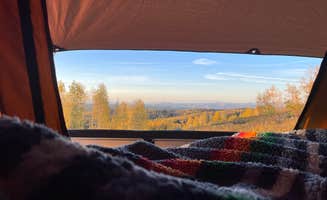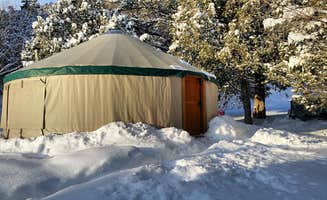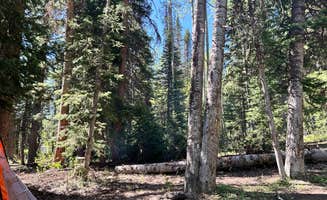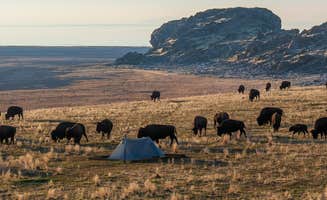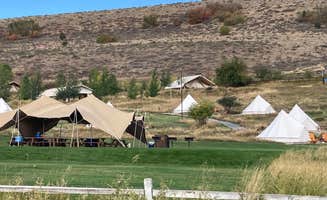Primitive tent camping near Mantua, Utah offers accessible options between May and September when higher elevation areas become snow-free. Most sites in the Wasatch-Cache National Forest sit between 7,000-9,000 feet elevation, providing natural air conditioning during summer months when valley temperatures frequently exceed 90°F. The region features predominantly aspen and conifer forests with scattered meadows and valley views.
What to do
Fishing local streams: Curtis Creek provides fishing opportunities with native Bonneville cutthroat trout. Campers report success using small flies and spinners in deeper pools. According to one visitor at Curtis Creek / Arbs Basin, "It's very quiet, barely any people. There's man made firepits made out of rocks of people who have stayed here."
Mountain biking: The Green Canyon trail system offers intermediate to advanced trails accessible from camping areas. During winter, the main road becomes a groomed cross-country ski trail. "The Green Canyon yurt is owned and managed by Powder Ridge ski touring. During the winter months, Powder Ridge manages the Green Canyon Road and grooms it on an almost daily basis," notes a visitor to Green Canyon Yurt.
Fall color viewing: Late September brings spectacular autumn colors as aspens turn gold. "We stayed here for the night on our rooftop tent... It's chilly and very pretty around. Nice view of the sunset," describes one camper at Curtis Creek.
What campers like
Small camping footprint: Most dispersed sites accommodate 1-3 tents maximum with limited parking. "After you've passed the Smithfield campground there are plenty of spots on both sides of the road where you can pull off and have dispersed camping. Most of the spots are pretty small and would only work for one or two tents or maybe a couple of hammocks," explains a reviewer at Smithfield Dispersed Campsite.
Weekday solitude: Many campers report having entire camping areas to themselves during weekdays. "We came during a week day and the whole site was empty! Very quiet, very pretty, and very colorful," reports a camper about Dispersed camping near Monte Cristo.
Natural campsite features: Sites often include rock formations that create natural windbreaks and sitting areas. "There are many spots with decent little Hills," notes one visitor describing the terrain near camping areas.
What you should know
Road conditions: Access roads to several dispersed sites narrow significantly after the first mile. "No warning that the road narrows with no turn around about a mile into the campground, or the trees are overgrown which scratched up my sides," cautions one Smithfield visitor.
Early arrival necessity: Friday arrivals should plan to reach camping areas before 3pm. "There are tons of free site all up and down the main road. The only problem is it is busy if you leave on Friday plan to get there by 3 at the latest. Spots fill quick," advises a Monte Cristo camper.
Limited cell service: Most camping areas have no cellular reception. "There's no cell service," confirms a Curtis Creek visitor, suggesting campers download offline maps before arrival.
Weather variability: Even in summer, temperatures can drop below 40°F at night. Prepare for significant temperature swings of 30-40 degrees between day and night.
Tips for camping with families
Beginner backpacking: Several areas offer short walk-in experiences perfect for children's first backpacking trip. "Aside from the excessive litter in a few places, This was a great place to give my 5 year old a taste of backpacking," explains a visitor to Cook Campsite.
Wildlife viewing opportunities: Early mornings provide opportunities to spot deer, elk, and various bird species. Bring binoculars for wildlife spotting from camp.
Shorter stays recommended: Limited amenities make 1-2 night stays most practical with children. Pack entertainment options as hiking and exploring are the primary activities.
Tips from RVers
Size limitations: Most dispersed areas accommodate smaller trailers under 20 feet. "Not for large RVs. Our 17 ft trailer with 4x4 was tricky to get into the spot because the loop was so small," notes a visitor at Split Rock Bay Backcountry Campsites.
Limited turnaround space: Several camping areas lack adequate turnaround space for larger vehicles. Scout sites before committing to a specific location.
Leveling challenges: Most sites require significant leveling blocks due to uneven terrain. Bring twice the normal amount of leveling equipment you would typically use at developed campgrounds.


